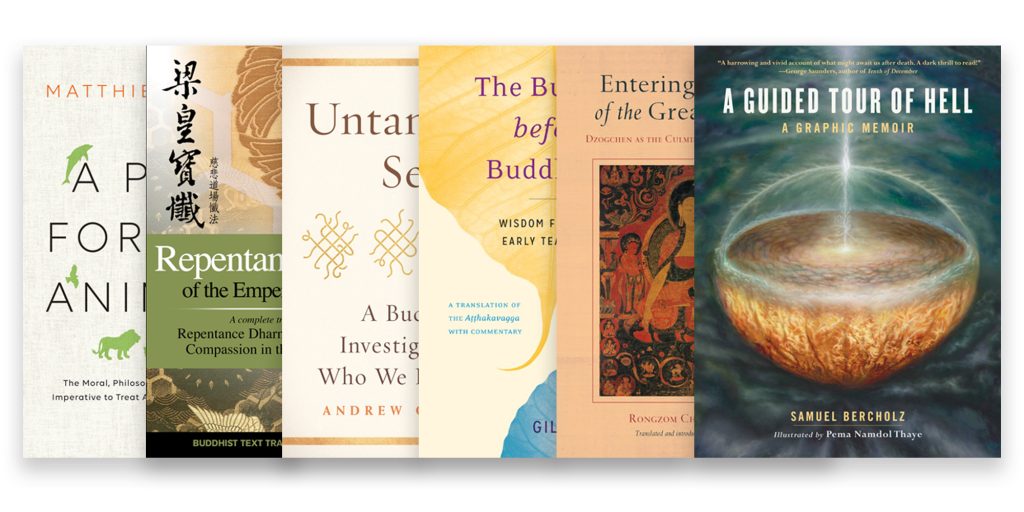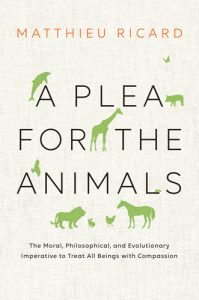
In Matthieu Ricard’s new book, A Plea for the Animals: The Moral, Philosophical, and Evolutionary Imperative to Treat All Beings with Compassion (Shambhala Publications, Oct. 2016, $26.95, 352 pp., cloth), the prolific Tibetan Buddhist monk turns his attention toward the lives of the sentient beings we share this planet with.
In thorough, reasoned chapters, Ricard explicates the situation of animals in the modern world, examining the violence that industrial meat production and overfishing have wrought on the 60 billion land animals and the thousand billion marine animals that are killed annually, a rate unequaled in the history of mankind. In the book, he also discusses the ethics of animal experimentation, the illegal wildlife trade, and the use of animals as entertainment objects, changing course to include a brief chapter on moral judgment.
His approach is refreshing: Ricard doesn’t aim to rebuke those who eat animals or those who farm them, and stays clear of the idea that we should care about industrial slaughter because of limited ecological resources. Instead, he places the inherent value of life at the center of his reasoning, appealing to the idea that human beings are moral agents capable of extending benevolence and kindness to all. He shares his hope that the human tendency for moral conformity can nudge our current attitudes and practices in regard to animal life away from violence, dominance, and destruction, and toward compassionate respect and consideration.
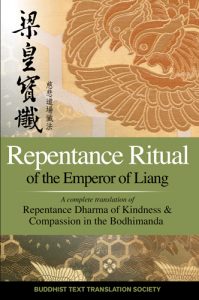
During the 6th century CE, Buddhism flourished under Emperor Wu, founder of the Liang Dynasty and a practicing Buddhist sometimes called the Bodhisattva Emperor. Legend has it that after the emperor’s wife died prematurely and was reborn as a python due to her “intense jealousy and hatred for the consorts and concubines,” he had Chan Master Baozhi compose a repentance ceremony on her behalf in order to help her be free from her misery. (It’s unclear if the good Chan Master did anything about the concubines.)
The ritual text that resulted, the Jeweled Repentance of the Emperor of Liang, is still used in monasteries today. This year, the Buddhist Text Translation Society released the first English translation of the text, a project that took a group of monks, nuns, and laypeople 15 years to complete.
The volume, Repentance Ritual of the Emperor of Liang (Buddhist Text Translation Society, November 2016, $13.95, 371 pp., paper), aims to introduce to a Western audience a popular East Asian practice—that of bowing as a ritual form of purification against existing karmic offenses and clearing obstructions on the path to spiritual liberation. Its verses extol the virtue of bringing forward resolve, explain how a person’s current suffering is due to previous deeds, and encourage the dedication of merit.
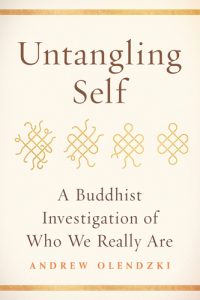
In Untangling Self: A Buddhist Investigation of Who We Really Are (Wisdom Publications, December 2016, $17.95, 200 pp., paper), a short collection of psychologically astute essays, the scholar, writer, teacher, and longtime Tricycle contributor Andrew Olendzki seeks to make some of the foundational ideas in Buddhist philosophy (the ones we tend to be confused by) easier to understand, while striving to bridge the gap between those ideas and the unique suffering we face in contemporary times. Calling for wisdom—an inward-facing knowledge—he extols the path of meditation and experiential investigation for altering our relationship with the outer world.
The book shines in that it makes Buddhist insight easy to understand. As Olendzki writes: “My suggestion is simply that as we walk the path we not look up so much at the destination, high above in the mist, but carefully place one foot in front of the other. . . . If we can manage one moment of wisdom, why not another?”
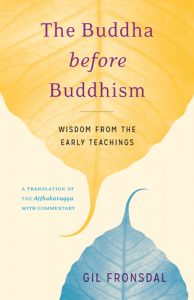
The Buddha Before Buddhism: Wisdom from the Early Teachings, by Gil Fronsdal (Shambhala Publications, November 2016, $18.95, 192 pp., paper), is a translation of the ancient Buddhist text Atthakavagga, or “Book of Eights.” Originally an independent text, the Book of Eights was later incorporated into the anthology of discourses called the Sutta Nipata, which itself was housed within the Kuddaka Nikaya, or Collection of Short Sayings.
The Book of Eights is thought by Buddhist scholars to contain some of the Buddha’s earliest teachings. The 16 poems in the collection deny the existence of ultimate religious “truth” or “knowledge,” instead offering a vision of peace and equanimity that an individual might attain with practice. The poems focus on four main themes: letting go of views, avoiding sensual craving, the qualities of a sage, and training to become a sage.
In this accessible translation, each chapter begins with an explanation by Fronsdal of the poem that follows, providing a framework for understanding it in the context of the whole text.
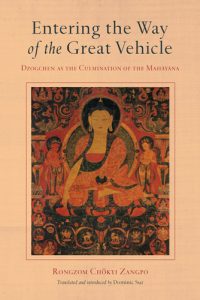
Entering the Way of the Great Vehicle: Dzogchen as the Culmination of the Mahayana (Shambhala Publications, January 2017, $29.95, 208 pp., cloth), translated by Dominic Sur, is the first English-language translation of Theg chen tshul ’ jug, an important Tibetan Buddhist text by the 11th-century polymath Rongzom Chokyi Zangpo, whose writings on tantra were said to be so powerful that anyone who looked at them would receive a profound blessing.
Rongzom lived during the renaissance of Buddhism in Tibet, where an influx of translations of Indian Buddhist texts eventually led to the rising political and religious influence of the “new schools” of Tibetan Buddhism: Kagyu, Gelugpa, and Sakya. As a scholar well versed in these newer traditions, Rongzom was able to defend the older Nyingma tradition against critics, arguing that the new schools did not go beyond the view of Dzogchen and were thus incomplete forms of the Buddha’s teachings.
This traditional Tibetan philosophical text is not for a general audience, but those with an in-depth understanding of Tibetan Buddhist philosophy will find Rongzom’s text, as the translator writes, “a masterly exposition of Buddhist doctrine organized around a constellation of core issues within a sustained argument about the nature of emptiness, appearance, and illusion—perhaps three of the most crucial philosophical topics in Buddhist discourse and philosophy.”
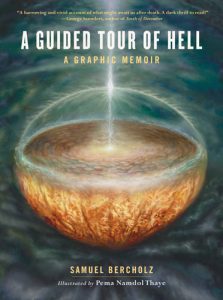
Samuel Bercholz’s A Guided Tour of Hell: A Graphic Memoir (Shambhala Publications, December 2016, $24.95, 160 pp., cloth) is not your average dharma book. Bercholz, founder of Shambhala Publications, has written a personal account (with imagery by the Tibetan artist Pema Namdol Thaye) of his near-death experience after heart surgery and a terrifying subsequent tour of the lowest realms of karmic rebirth. After returning from the underworld, Bercholz eventually shared his story with the meditation master Tulku Thondrop Rinpoche, who joked that he might be the first American delog, or “returner from death.” (The term refers to advanced meditators in the Tibetan tradition who visit the lower realms and report what they have witnessed.)
Bercholz’s book itself occupies a kind of bardo state: neither memoir nor a typical graphic novel, it begins with a straightforward telling of the author’s life up until the moment of his brush with death, but then proceeds through a tour of hell using fictionalized vignettes, mini-narratives that illustrate the habits of thought and behavior that have led to their protagonists’ stay in the hell realms.
A Guided Tour of Hell is not subtitled “a graphic memoir” for nothing—both its narrative and its imagery are often gruesome, but compellingly so. Provided you have the stomach for grotesquerie, this book is a unique read.
Thank you for subscribing to Tricycle! As a nonprofit, we depend on readers like you to keep Buddhist teachings and practices widely available.
